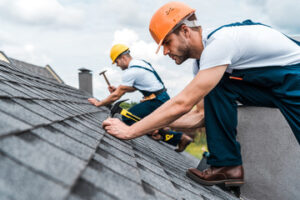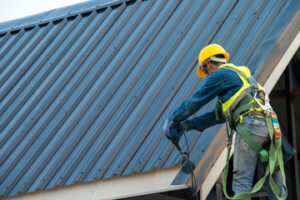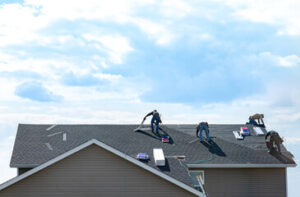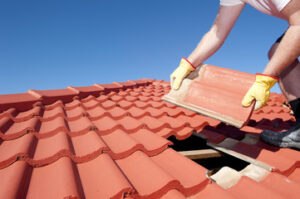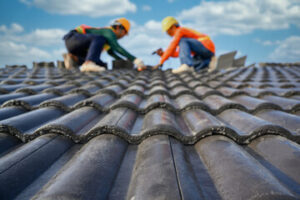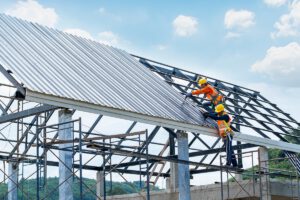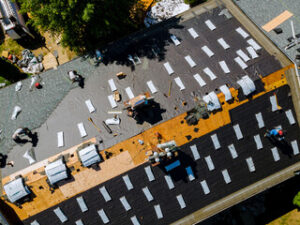When selecting Baltimore Trucking Accident Lawyer look for one who understands the regulations that apply to truck drivers and companies. They can also investigate the crash scene for evidence such as dashcam and security video, smartphone photos, witness statements, and other data.

They can also prepare a demand letter to send to the negligent party’s insurance provider. They can then negotiate for a fair settlement.
A truck accident is different than a regular car accident, and the damage and injuries can be much worse. A trucking accident lawyer should have experience with the unique issues that can occur in these types of crashes, including identifying liable parties and determining negligence. They will also have a firm understanding of the laws that govern the trucking industry, including federal regulations that dictate safety standards and driver qualifications.
In addition to helping you determine liability, a good trucking accident lawyer will help you collect evidence, build a strong case, and prepare for trial. They will know how to work with experts in the field such as accident reconstructionists and medical professionals, who can support your claims. This will help you get the compensation you deserve.
The legal process of pursuing financial compensation after a crash can be complicated and time-consuming. In addition, insurance companies can be aggressive and use tactics to avoid paying a fair settlement. An experienced trucking accident lawyer can counter these attempts and ensure you receive a reasonable settlement.
When you are looking for a trucking accident attorney, consider their experience and track record. Ask about their knowledge of the trucking industry, how long they have been in practice, and what their specialized training is. You should also be able to find out how many clients they have worked with on similar cases as yours. You should also inquire about whether they will be handling your case or if they will delegate any aspects of it to junior associates.
An experienced trucking accident lawyer can provide a variety of benefits to their clients, including taking the burden off of them so they can focus on recovering from their injuries. A lawyer can also help you establish a claim for property damage, which may cover the cost of repairing or replacing your vehicle and other personal belongings that were damaged in the crash.
Injured victims face significant challenges when attempting to recover damages from large trucking companies and their insurers. Often, these parties will do everything they can to deny or minimize liability, even if an accident victim has suffered severe injuries and loss of life. An experienced trucking accident attorney can help you navigate these challenges and fight for the full compensation you deserve.
Reputation
A truck accident lawyer with a solid reputation is more likely to get you a higher settlement. This is because they have a proven track record of getting results and will be more confident when negotiating with insurance companies. They also have connections to other professionals who can help with your case, including investigators, expert witnesses, and forensic analysts. This can give you a more comprehensive and well-rounded claim for compensation.
They can also conduct a thorough investigation into the crash to determine who is responsible. They will look at things like whether the driver violated any safety rules, how the truck was maintained, and any other factors that contributed to the accident. They may even be able to secure punitive damages against the at-fault party, which are awarded for actions that show reckless disregard for safety.
The consequences of a truck collision can be severe. They can include everything from disfigurement to severe injuries that require long-term treatment. They can also cause loss of income due to the inability to work during recovery and future loss of earning potential. This is why it’s important to have a Bronx truck accident lawyer who can seek fair and adequate compensation for your financial losses.
A reputable truck accident lawyer will take the time to understand your situation and how it has affected your life. They will also take into consideration any non-financial losses you’ve suffered as a result of the accident. This can include loss of companionship, emotional distress, and loss of quality of life. They will be able to accurately calculate the value of your claim and seek appropriate compensation from all parties involved in the incident.
In addition to seeking compensation for your financial losses, you can also receive compensation for any physical injuries or property damage caused by the crash. This can include repairs to your vehicle and other personal belongings, as well as compensation for any medical expenses you’ve incurred due to your injuries. You can even pursue compensation for the loss of your enjoyment of life, which takes into account the impact of your injury on your daily activities and mental health.
Fees
The fees charged by a Trucking Accident Lawyer can vary significantly, depending on the nature of the case and other factors. For example, some lawyers may charge more for cases that involve complex issues such as multiple defendants or serious injuries. Other factors that can influence the cost of representation include filing costs, witness fees and other expenses. A good attorney will be transparent about these fees so you can budget accordingly.
A skilled Florida Trucking Accident Lawyer can help you navigate the complex legal process. They will ensure that all relevant evidence is collected, including police reports, medical records and witness statements. They will also review the insurance company’s policies to determine if you are owed compensation. They can also negotiate with the insurance company on your behalf and ensure that you receive a fair settlement based on your injuries and losses.
In addition to their experience and knowledge of the law, a qualified Trucking Accident Lawyer will have access to resources that can make your case more successful. This includes expert witnesses, investigators and forensic scientists. They will also have access to research databases that can help them build a strong case against the trucking company or driver responsible for your accident.
While the hourly rates of truck accident attorneys can vary widely, they should all be able to offer competitive rates. In addition, many of them offer contingency fee arrangements, which means that they do not require a retainer fee to represent you. Typically, they will receive between 33% and 40% of the final settlement amount.
Other expenses, such as witness fees and court filing fees, will be the responsibility of the client. These fees should be discussed before hiring an attorney, as they can add up quickly. Additionally, some attorneys may charge extra for services such as photocopying documents or printing reports.
While hiring a Trucking Accident Lawyer can seem expensive, it is important to remember that the fees they charge are necessary to ensure that you receive the maximum possible compensation for your injuries and losses. While the initial consultation is free, you will need to pay for any other legal expenses that are incurred during the course of the case.
Insurance
Truck accidents are more devastating than normal car accidents because of the size and weight of large trucks. They are more likely to result in multiple vehicle pile-ups, cargo spillages, and severe injuries, including fatalities. Truck accident claims are often more complex than other car accident cases because they often involve violations of trucking regulations and may involve multiple liable parties.
A trucking accident lawyer can help you determine who is liable for your injuries and how much you should be compensated. They will take into account your medical expenses, loss of income due to your injuries, and other expenses that have been incurred as a result of the crash. They will also consider your pain and suffering, loss of consortium, disfigurement, emotional distress, and other non-economic damages.
One of the most important duties that a truck accident lawyer can perform is negotiating with insurance companies. They are well-versed in the tactics used by insurers to minimize payouts and can counter their lowball offers with strong arguments backed by evidence. They can also handle the complexities of interpreting insurance policies and laws.
Whether you have sustained an injury from a truck accident, or you have lost a loved one in a collision with a truck, it is crucial to hire a qualified truck accident attorney as soon as possible. They can begin investigating the incident and collecting evidence to support your case. In addition, they can ensure that your legal claim is filed within the statute of limitations.
While truck accidents are not as common as car accidents, they do occur on the roads of New York City. A number of factors can cause these accidents, including bad weather, traffic congestion, road construction, and vehicle defects. Moreover, poor truck maintenance can be a serious problem for drivers as it can lead to tire blowouts, which can significantly increase the chances of an accident.
Injuries resulting from truck accidents can be very severe, and the impact can be felt for a lifetime. In order to get the compensation you deserve, it is vital to contact an experienced truck accident lawyer as soon as possible. A competent attorney can investigate the accident and build a solid case against the truck driver, the trucking company, or other third parties who may be liable.
